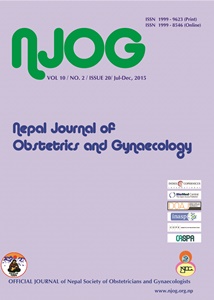Choices, Shift and Continuation of Temporary Contraceptive Methods among Women of Reproductive age in Western Development Region of Nepal
Keywords:
contraceptives, family planning, norplant, pills, reproductive age.Abstract
Aims: Global family planning programs have been in existence in the developing world. Modern techniques of temporary contraceptives have been proved to be useful tool for limiting births. This study is intended to identify the use pattern, associated factors with the choice, shift and continuity of temporary methods of contraception.Methods: This is descriptive cross-sectional study, incorporating qualitative aspects. Out of sixteen districts six were selected proportionately by using simple random methods from each ecological zone of the Western Development Regions, Nepal. Focus group discussion was accomplished among the different level family planning service providers.
Results: User of Depo-Provera and pills were seen more in comparison to other temporary contraceptive. There are different reasons behind choosing of temporary contraceptive method such as Pills make regularity in menstruation, Norplant is useful for prolonged period, Depo-Provera is useful for three months and confidently used for a long time without any risk, motivation by friends/relatives. Reasons in changing the contraceptives includes associated side effects, lack of availability, irregularity in menstruation, choosing the another best method, excessive bleeding, difficult to use, pressure from family and husband to give birth, misunderstanding and stress in the family, traditional belief and lack of education.
Conclusions: For proper choice of modern contraceptive methods promotion, education and knowledge about associated factors related to use of these method is needed. Continuous information on contraceptives focusing particularly on the side effects and trained health care providers are essential.
Downloads
Downloads
Published
How to Cite
Issue
Section
License
Copyright on any research article in the Nepal Journal of Obstetrics and Gynaecology is retained by the author(s).
The authors grant the Nepal Journal of Obstetrics and Gynaecology a license to publish the article and identify itself as the original publisher.
Articles in the Nepal Journal of Obstetrics and Gynaecology are Open Access articles published under the Creative Commons CC BY-NC License (https://creativecommons.org/licenses/by-nc/4.0/)
This license permits use, distribution and reproduction in any medium, provided the original work is properly cited, and it is not used for commercial purposes.



